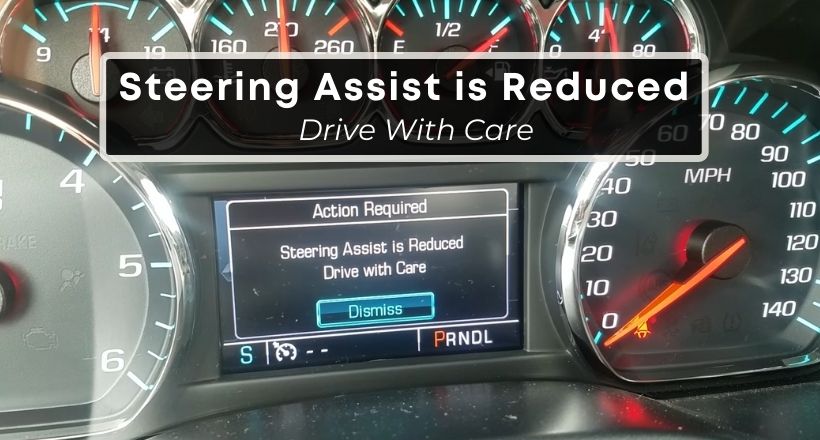The GMC Acadia is one of my favorite vehicles.
It’s a midrange SUV well-known for offering a spacious interior and comfortable ride in a relatively affordable price range.
However, like every other vehicle, it’s not immune to the occasional hiccups.
One of those hiccups is the ‘Attention Required: Steering Assist is Reduced, Drive With Car’ warning message.
In this post, we’ll talk about why this message appears and how you can reset it.
Reset GMC Acadia Steering Assist is Reduced, Drive With Care
Oftentimes, the ‘steering assist is reduced, drive with care’ message in GMC Acadia can be reset by disconnecting the negative battery terminal for a few minutes or erasing the codes through an OBD-II scanner.
However, it’ll reappear if there’s some faulty component (ECT sensor, thermostat, bad battery, etc.) triggering it.
In such a situation, you’ll need to repair or replace that component to fix this error message.
What Does ‘Steering Assist is Reduced, Drive With Care’ Mean In GMC Acadia?
The steering assist system is a feature found in modern vehicles that reduces the effort required by the driver to turn the steering wheel, especially in sharp turns.
If we talk about the GMC Acadia vehicles, this assistance (EPS) is provided by an electric motor, which increases or decreases the assistance level according to vehicle speed and driving conditions.
On the other hand, the ‘Attention Required: Steering Assist is Reduced, Drive With Care’ is a warning message that generally appears on the instrument panels of GMC Acadia 2017-2019 vehicles.
It tells the driver that there’s a problem with the vehicle’s steering assist system and that they should drive carefully to avoid any mishap.
It usually occurs while the vehicle is running, making the driver worried about whether the issue is severe enough to stop or if they should continue driving.
Apart from GMC Acadia, I’ve also seen different Chevy vehicles, such as Malibu, Traverse, Silverado, etc., getting this warning message.
Why GMC Acadia Says Steering Assist is Reduced, Drive With Care
Below are some of the common reasons for this warning message.
1. Weak Battery
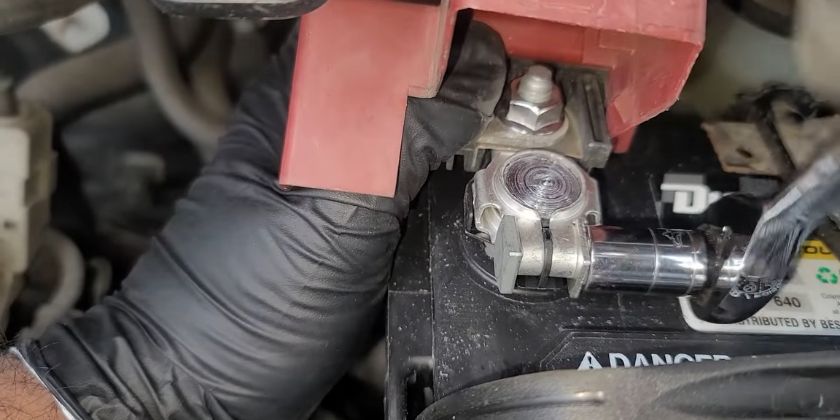
The first thing you should check is the battery as it’s a common source behind a lot of warning messages (such as ‘key system error‘, ‘key fob not detected‘, or ‘service 4WD system‘).
Many Acadia owners don’t bother to check the battery as it’s not typically related to the power steering system.
However, they don’t realize that GMC Acadia vehicles from 2017 feature an electric power steering system.
Unlike the regular hydraulic power steering system, the Electric Power Steering (EPS) system has an electric motor installed near the steering rack.
This motor increases or decreases the amount of steering assisting based on the data received from the steering angle sensor.
As this motor gets power from the battery, any weak or dying battery will not provide it enough power to help the driver in steering – and the steering assist reduced message will appear on the instrument panel.
You can use an OBD-II scanner to confirm whether that’s the case or not. If you get a U0100 DTC code instead of P128 (which we’ll discuss later), it usually indicates some issue with the battery.
In such a situation, you should test the battery with a multimeter. If the voltage reading is less than 12.6V (with all accessories turned off), the battery is probably not in good shape.
That said, sometimes you get a low reading due to corroded or loose battery terminals, even when the battery itself is good.
Therefore, if you get a low reading, it’s always a good practice to clean and tighten the terminals before testing the battery again.
Another thing you need to check is the Cold Cranking Amps (CCA). That’s because even when a car battery’s voltage is good, it’ll not work efficiently if the CCA reading is below the rated value.
The same thing happened with a friend of mine.
He got the steering assist reduced message while the battery voltage was good. But when he checked the CCA reading, he found that the battery had only 500 CCA while the battery’s CCA rating was 750.
So, even when you get a good voltage reading with a multimeter, it makes sense to test the CCA reading with a car battery tester.
2. Blown Power Steering Fuse
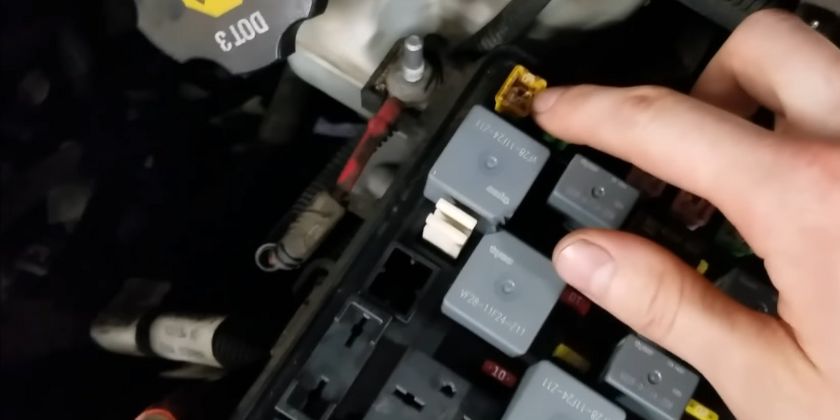
The next thing you’ll need to check is the power steering fuse.
Like other components in the vehicle, the electric power steering in GMC Acadia has a dedicated fuse that protects it against electrical overloads.
If there’s a short circuit in the power steering system, this fuse will blow and open up the circuit. As a result, the power steering system will stop getting power and will not work, as a result.
So, test this fuse with a multimeter and replace it with a new one (of the same amperage) if it’s blown.
3. Bad Engine Coolant Temperature Sensor
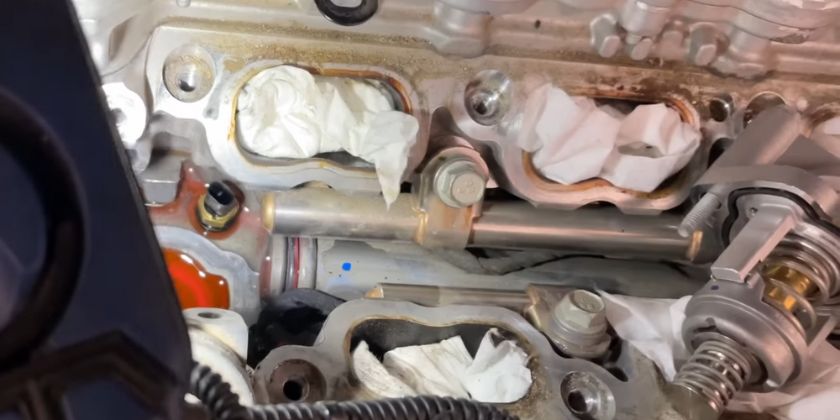
If you get the ‘steering assist is reduced’ message while the A/C has stopped working, it can be due to a faulty engine coolant temperature sensor.
The ECT sensor is located on the thermostat housing. It monitors the temperature of the engine coolant/antifreeze and sends that information to the ECM.
The ECM uses this information to make critical engine-related decisions (about fuel injection, fuel mix, ignition timing, etc.), ensuring that the engine is running at optimal temperature.
Although this sensor is not related to the steering assist system, the problem starts when it malfunctions.
In the case of a malfunction, the ECT sensor can send an incorrect signal to the ECM, causing it to think that the engine is overheating.
This ECM responds by running the radiator fan at full speed and shutting down the A/C compressor to reduce the engine load and cool it down.
To decrease the load further, the ECM reduces the electric power draw by different vehicle systems, including the electric steering assist system.
That’s why you get the steering assist reduced warning message.
To confirm whether that’s indeed the case, you’ll need to test the ECT sensor with a multimeter, as shown in the video below.
Sometimes, the sensor itself is good, but the wires on its connector are damaged. So, make sure to check them as well.
4. Faulty Thermostat
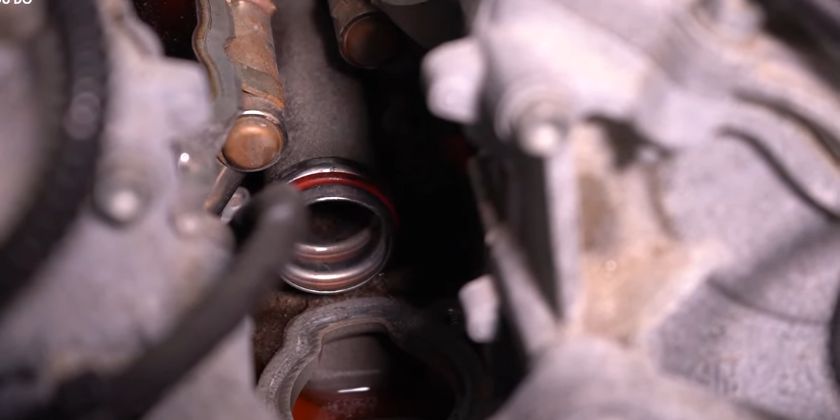
The thermostat is a component that controls the coolant flow between the radiator and the engine.
Its job is to maintain the ideal temperature for the coolant so that the engine doesn’t get too hot but remains hot enough to warm up quickly.
Under normal circumstances, the thermostat opens when the engine temperature rises, allowing the coolant to flow—similarly, it closes when the temperature level drops, keeping the coolant inside the engine.
However, if the thermostat is stuck open, its temperature will decrease because the coolant will flow between the engine and the radiator all the time.
This, in turn, will cause the engine to run too cold. The ECM assumes that the vehicle doesn’t need to activate the power steering system and thickens the grease around the steering assist motor, resulting in the reduced steering assist message.
Therefore, if you’re getting the steering assist reduced message while the engine temperature gauge is near zero and the A/C has shut off, it’s probably due to a faulty thermostat.
When the temperature gauge drops, the controller puts the engine into protective mode, as it doesn’t know whether the temperature drop reading is accurate or not. That’s why it turns on both cooling fans as a countermeasure in case the engine is overheating.
You can also use an OBD-II scanner in this regard. A faulty thermostat will give you the P0128 (Engine Coolant Temperature below Thermostat Regulating Temperature) and U0401 DTC codes.
In some cases, there will be an additional P01F0 code (Coolant Temperature Dropped Below Diagnostic Monitoring Temperature).
As for the fix, you’ll need to replace the thermostat. It’s not an easy job and will take several hours, even if you have some experience in DIY car repair. That’s why you should hire a professional mechanic for this task.
5. Faulty Steering Angle Sensor
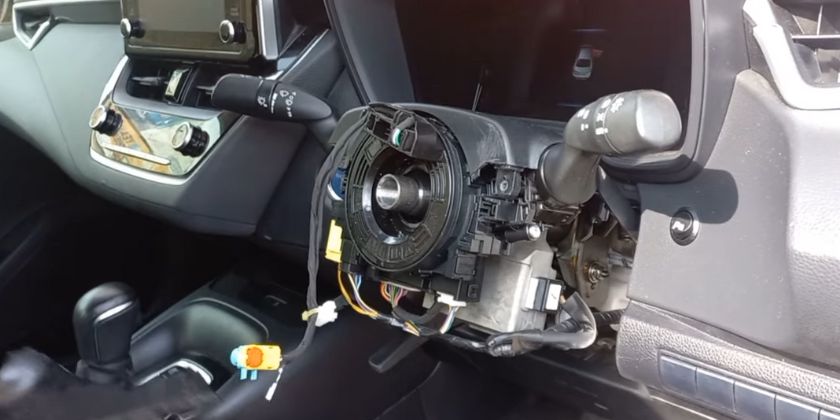
The last thing you can check for the steering assist reduced message is the steering angle sensor.
This sensor measures the position and movement (rate of turn) of the steering wheel and sends that data to the ECM. The ECM uses the data to determine how much steering assistance a driver needs at a particular time.
If this sensor goes bad, the ECM will have incorrect/contradicting data, which will result in different problems in the power steering system and may trigger the steering assist reduced message on the instrument panel.
Conclusion
So these were the primary reasons for the ‘steering assist is reduced, drive with care’ message on your GMC Acadia.
If you’ve checked all of the components we discussed above, I recommend consulting a GMC dealership. Most probably, the issue is with the power steering motor, and it needs to be replaced.
Frequently Asked Questions
What Does it Mean When Steering Assist is Reduced GMC Acadia?
The ‘Steering Assist is Reduced’ message in GMC Acadia means the power steering assist cannot be activated at this time. Therefore, you should fix the underlying problem to solve this issue and drive carefully meanwhile.
Can I Drive My Car With the Power Steering Assist Fault?
It depends. If your vehicle has a hydraulic power steering system, you can damage it severely if you drive without power steering (as it can damage the power steering fluid pump).
But if your vehicle has an electric power steering system, it’s technically possible to drive with a power steering assist fault.
With that said, I won’t recommend you drive in either case.
The power assist fault makes it really hard for you to make any turns, especially at low speeds. This issue exponentially increases the risk of an accident. That’s why driving without power steering is banned in all 50 US states.
Instead, you should take the vehicle to the nearest dealership to fix this issue as early as possible.
How Much Does it Cost to Fix a Power Steering Assist?
It depends on the component required to be fixed. If you’ve found the Engine Coolant Temperature sensor not to be working properly, you can get a new one for $20-$30 and have a mechanic replace it.
However, if the main culprit is the thermostat, you’ll need to spend at least 200 bucks on it. Also, the mechanic’s fee will be higher for this job as removing the current thermostat a lot of time.
The overall cost can go up to $700-$800 depending on the mechanic fees around your area.
What is The Code P0128 on a GMC Acadia?
The P0128 DTC code in GMC Acadia indicates that the ECM has detected the engine coolant’s temperature to be lower than the thermostat’s regulating temperature. The possible causes for this code are a leaking/stuck open thermostat, faulty Engine Coolant Temperature (ECT) sensor, or low coolant level.
Will Disconnecting The Battery Reset the Power Steering?
If the power steering error message is caused by a software glitch, disconnecting the battery for some minutes might reset this message.
But if it’s caused by some other malfunctioning component, you’ll have to repair or replace that component to fix this issue.
Can a Bad Alternator Cause Power Steering Problems?
Yes, if your vehicle has an electric power steering system, it can stop working due to a bad alternator, as the latter won’t produce enough electricity to power all of the vehicle’s systems.
How Do You Know If Your Power Steering Fuse Is Blown?
If your vehicle has an electric power steering system, it can stop working if the power steering fuse is blown.
To verify whether that’s indeed the case, you should access the fuse box, locate this fuse (check your vehicle’s fuse box diagram), and test its continuity with a multimeter.
If the multimeter doesn’t give any reading/beep in continuity mode, the fuse is blown and should be replaced.

